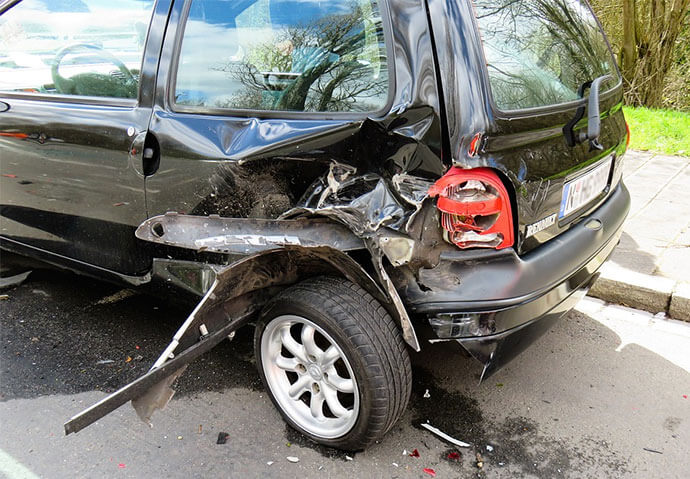Navigating the world of car insurance can feel like you’re wading through a sea of fine print, jargon, and endless options. Finding the right policy can be overwhelming, especially with so many variables to consider. Whether you’re a new driver, buying a new car, or simply reviewing your existing policy, this guide will help you find the best coverage at the best price without losing your mind.

Table of Contents
Understanding State Requirements
Before diving into the nitty-gritty of choosing car insurance, it’s crucial to understand what your state requires. Every state except New Hampshire and Virginia mandates drivers to carry a minimum level of liability insurance. This coverage is designed to protect others if you’re at fault in an accident. Some states also require uninsured/underinsured motorist coverage (UM/UIM) and personal injury protection (PIP), which help cover your expenses if you’re hit by an uninsured driver or need medical care after an accident.
Knowing your state’s rules helps you figure out the minimum coverage you need. But often, the state minimums aren’t enough to cover all your expenses if you’re involved in a major accident. So while you’re shopping around, consider adding a bit more coverage for peace of mind.
Review Your Current Policy
If you’re already insured, start by reviewing your current policy. Here are some questions to ask yourself:
- Are your premiums too high?
- Are your coverage limits sufficient to protect your savings if something happens?
- Are you getting all the discounts you qualify for, like multi-policy or safe driver discounts?
Understanding your current coverage will help you make smarter choices when comparing new policies.
Steps to Finding the Right Policy
When it’s time to buy new car insurance or update your existing policy, follow these steps to make the process smoother and less stressful:
1. Figure Out What You Need
The first step is understanding the basics: What types of coverage are mandatory, and what’s optional but nice to have? At a minimum, you’ll need liability insurance to cover damages and injuries if you’re at fault in an accident. But you might also want to consider these additional options:
- Collision Insurance: Covers damage to your car in case of an accident.
- Comprehensive Insurance: Protects against non-collision damage like theft, vandalism, and natural disasters.
- Gap Insurance: Covers the difference if your car is totaled and you owe more than it’s worth.
- Medical Payments Coverage: Pays medical bills for you and your passengers after an accident.
2. Gather Your Information
Make sure you have all the necessary information handy. This includes:
- Driver’s license number
- Social security number(s) for each driver
- Vehicle identification number (VIN)
- The car’s make, model, year, and current mileage
- Vehicle safety and security features (like anti-lock brakes)
- Your driving habits (how many miles you drive per year)
- Where you park your car (garage or street)
- Desired coverage levels and deductible amounts
- Whether the car is owned, financed, or leased
Having these details ready will help you get accurate quotes and avoid any surprises later.
3. Get Quotes from Multiple Companies
Don’t just settle for the first quote you find. Shop around and get quotes from at least three companies. You can do this online, through a company representative (sometimes called a captive agent), or by working with an independent insurance broker who can provide multiple quotes. Each option has its pros and cons:
- Online: Quick and convenient, but impersonal and can make it hard to get answers to specific questions.
- Captive Agent: Can guide you through the process and answer your questions, but only offers quotes from one company.
- Independent Broker: Provides quotes from multiple insurance companies and is loyal to you, not the insurance company. However, brokers may charge a fee for their services.
4. Compare Your Options
Once you have a few quotes, take a close look at each one. Don’t just focus on the price—check the coverage limits, deductibles, and any additional perks or discounts. Make sure you’re comparing apples to apples. Some companies offer features like accident forgiveness or roadside assistance, which might be worth paying a bit more for.
5. Make Your Decision and Buy Your Policy
After weighing your options, choose the policy that best fits your needs and budget. Many companies offer discounts for buying online or signing up for automatic payments. Make sure you get written confirmation of your coverage start date and understand any grace periods.
6. Cancel Your Old Policy
If you’re switching insurers, make sure there’s no gap in coverage. Overlap the start date of your new policy with the end date of your old one. Notify your old insurer in writing, and get written confirmation that your previous policy is canceled.
When Should You Buy Car Insurance?
You should always have insurance if you own a car, but here are a few situations when you might need to revisit your policy:
- New Drivers: If you’ve recently gotten your license and aren’t covered under another policy, you’ll need insurance to drive legally.
- Buying or Leasing a New Car: Before driving your new car off the lot, you’ll need proof of insurance.
- Annual Review: Checking your policy each year helps you adjust your coverage based on life changes and identify potential savings.
- Major Life Events: Getting married, relocating, or changing jobs can all affect your insurance needs and rates.
Do You Need Insurance If You Don’t Own a Car?
Even if you don’t own a car, it might be worth looking into non-owner insurance. This is liability coverage for those who regularly borrow a friend’s car, rent vehicles often, or use car-sharing services. It covers damages and injuries to others if you’re at fault in an accident, but it won’t cover damage to the car you’re driving.
Non-owner car insurance is also useful if you need to file an SR-22 form to prove you’re insured and have your driving privileges reinstated. Meanwhile, rental car insurance provides liability, damage, and personal effects protection while driving a rental vehicle.
Finding the Cheapest Car Insurance
Our research shows that USAA offers the most affordable rates, followed closely by Erie Insurance. However, USAA is only available to military members and their families. If you’re not eligible, Erie is a solid alternative with rates only about $200 higher on average. Here are some factors that affect your premiums:
- Driving Record: Safe drivers usually pay less, while accidents, speeding tickets, and DUIs can increase rates significantly.
- Where You Live: Urban drivers tend to pay more due to higher traffic and theft rates.
- What You Drive: Sports cars or luxury vehicles typically cost more to insure than sedans or minivans.
- Coverage Level: Higher coverage limits and lower deductibles mean higher premiums.
- Discounts: Bundling policies, having a clean driving record, and taking defensive driving courses can earn you discounts.
FAQs
Does my credit score affect my car insurance rate?
Yes, many insurers use credit scores to assess risk and determine premiums. Drivers with higher credit scores often receive lower rates. If your credit score improves significantly, it’s a good time to request a policy review or shop for new quotes.
How much car insurance coverage do I really need?
The amount of car insurance coverage you need depends on your state’s requirements and your personal situation. Start with the state minimums for liability coverage, then consider your assets. If you own a home or have significant savings, it’s wise to have higher liability limits to protect them in case of a lawsuit. For collision and comprehensive coverage, consider your car’s value and how much you can afford to pay out of pocket in the event of a loss.
Do I need car insurance if I only drive occasionally?
Yes, you should still maintain some form of insurance. If you occasionally borrow or rent cars, consider a non-owner car insurance policy, which provides liability coverage. If you drive infrequently and own a car, consider usage-based insurance (UBI) or a pay-per-mile policy that charges based on how much you actually drive.
Final Thoughts
Getting car insurance doesn’t have to be a hassle. By understanding your state’s requirements, knowing what coverage you need, and shopping around for the best rates, you can find a policy that gives you peace of mind without breaking the bank. Whether you’re a new driver or a seasoned road warrior, review your policy annually to make sure it still fits your needs.
If you’re switching insurers, remember to ensure no gaps in your coverage. Having a policy that aligns with your driving habits and lifestyle will help protect you and your loved ones when it matters most.











Leave a Reply